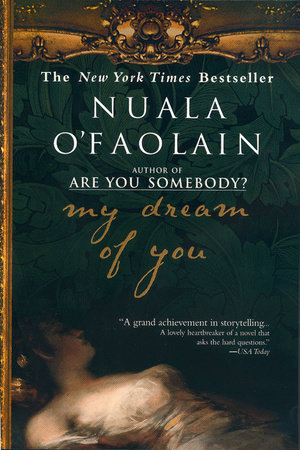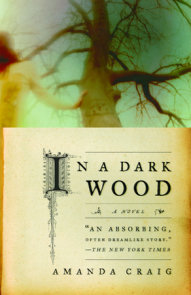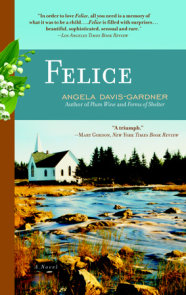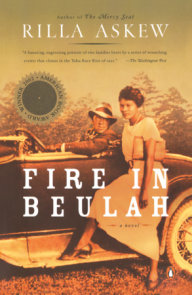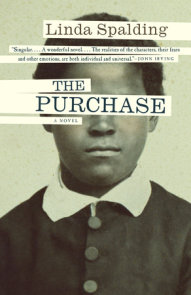READERS GUIDE
Questions and Topics for Discussion
INTRODUCTION
What gives a life meaning? How is love found? Nuala O’Faolain, noted Irish Times columnist, took on these questions with striking intimacy and candor in her bestselling and acclaimed memoir, Are You Somebody? Hailed as “a beautiful exploration of human loneliness and happiness, of contentment and longing” (Alice McDermott, The Washington Post), the book struck a chord with legions of readers on both sides of the Atlantic and became a #1 New York Times bestseller. My Dream of You followed her memoir’s path, hitting bestseller lists around the world and confirming O’Faolain’s remarkable gifts as a writer.
Set in Ireland and spanning a century-and-a-half, My Dream of You unfolds the compelling stories of two women and their quests for passion, connection, and fulfillment. On the brink of fifty, Kathleen de Burca is looking back at her life and asking questions about her choices. A globetrotting staff writer for the London-based TravelWrite syndicate for more than twenty years, she is used to living—and loving—on the run. Since the age of twenty-three, when she betrayed her first meaningful intimate relationship, she has had a steady succession of brief encounters, which have become less satisfying and more humiliating with each passing year. After a quick round of blows—culminating with the sudden death of her cherished colleague and closest friend—Kathleen decides to leave her job and rethink her life. Intrigued by a divorce case dating back to the days of the Potato Famine, she decides to try her hand at writing about it. The case, called “The Talbot Affair,” detailed the clandestine liaison lasting three years between the wife of a British landlord and an Irish servant in Ireland in the 1850s. After a bitter thirty-year absence, Kathleen returns to Ireland, the land of her troubled childhood and turbulent heritage, in search of answers to her questions about desire and lasting love.
A contemporary story wrapped around an actual event, both equally gripping, My Dream of You is rich in timeless and relevant truths about adversity and human nature, passion and true love. Having created two complex, deeply feeling women at the mercy of their times and circumstances, and forced to make difficult choices, Nuala O’Faolain proves she is as gifted and powerful a weaver of fiction as she is an observer and chronicler of real life.
ABOUT NUALA O’FAOLAIN
Born in Dublin, Ireland, the second eldest of nine children of a journalist who became Ireland’s first ‘social’ columnist—a gentler Walter Winchell or Nigel Dempster—who for years wrote a newspaper Dubliner’s Diary about the goings-on around town the night before. This occupation meant he was rarely available to his wife and family, and over time—as touched on in Nuala O’Faolain’s autobiographical essay, Are You Somebody?—his wife, Nuala’s mother Catherine, became more and more lonely and sunk in alcoholism, and the home and the children became more neglected. The family lived in various cheap rented houses up and down the line of the railway out of Dublin and from time to time, like something out of a fairytale, the glamorous father would descend from a train.
Nuala, aged 14, was a gifted but almost out-of-control girl, sneaking out at night to go to dancehalls with men and women much older than herself. The nuns at her convent school asked her parents to remove her, and in an uncharacteristic burst of attentiveness they found the money and made the arrangements to send her away to boarding-school where she spent the rest of her school years. At this remote, Irish-speaking convent, she began to achieve academic success and to convert the turbulent impulses that had got her into so much trouble at puberty into an intellectual and an emotional life.
At 18 she went to university in Dublin on a coveted entrance scholarship. But the freedom of Dublin city and new interests—love, left-wing politics, drinking—unbalanced her again, and she dropped out of college and had to go to England, to work—like many penniless Irish at the time—at various unskilled jobs. She was saved from this being a permanent fate by the kindness of some older people in Dublin who watched over her and lent her money to pay her fees while trying to complete her degree.
She did this with distinction, and over the next few years also got a scholarship to the University of Hull in England where she read medieval literature; returned to Dublin and got a qualification in French, and an M.A; and finally won a travelling studentship, which she took up at the University of Oxford where, in the late sixties, she got a post-graduate degree—a B.Phil.—mainly in nineteenth-century literature.
Oxford University in the late sixties was still beautiful and unspoiled by tourists, and because of the Beatles and Lucky Jimand Carnaby Street, working-class students, and even plebeian outsiders like the Irish, were in fashion. After three marvellous years it was a difficult transition to return to Dublin to become a lecturer at U.C.D.—not least because of an on-again off-again engagement to an English writer. The next ten years were unsettled by this relationship, which in the end came to nothing.
To be near this man, Nuala O’Faolain moved to London to become a producer with the BBC, making television and radio programmes for the first years of the arts faculty of the Open University. Then she became one of the first team making ‘access’ programmes for BBC television and then made programmes from Northern Ireland for a BBC Further Education series. This decade was one of constant travel and learning, for a BBC still perfectly self-confident. Nuala O’Faolain also reviewed books for the London Times during this period; was a guest lecturer in Indiana and many other places, was seconded to Teheran for the planning of an Iranian ‘open university’ in the last year of the Shah’s reign, taught occasional evening classes in Morley College, etc.
She began to visit the west of Ireland on holiday and to become, for the first time, interested in the Irish language and Irish traditional music and song and dance, and Irish social history. And the day she realized that the place she liked best in London was London Airport she gave up on England, and returned to Ireland, getting work as a television producer in the current affairs section of Radio Telefis Eireann, and also reviewing and lecturing extensively. When a new university was set up in Dublin she took a year’s leave of absence and taught Media Studies. She became one of an all-woman team who made a weekly woman’s programme—a first on Irish television—and also made a series with older women, called ‘Plain Tales,’ where ‘ordinary’ women told the stories of their extraordinary lives. This won the award for television programme of the year. Soon afterwards, Nuala O’Faolain was invited to become an opinion columnist for The Irish Times—Ireland’s leading newspaper. The next year she won the annual award for journalist of the year.
For the last twelve years, she has been with The Irish Times, primarily as a columnist but also writing features from Africa, the United States and all over Europe, and—taking up residence in Belfast for almost a year—from Northern Ireland. She also presented a television books programme, a series of radio interviews, reviewed for magazines and so on.
In 1996 a small Irish publisher brought out a selection of her opinion columns, and she offered to write an introduction to them. The introduction, unexpectedly, and uncalled—for, grew and grew as she wrote it. She wrote it for herself—looking back over a life which had always been difficult and lonely on a personal level, in an attempt to accept that her promise had come to nothing, and that now, in her fifties, she had no accomplishments to show, no partner, no children—no company of friends, even, at times like Christmas—and that she must say goodbye to hope. The book of journalism with this introduction had a very small print run and came out quietly, with no launch, no review copies sent out, no advertising, etc. But when she talked about it on television it became an instant bestseller in Ireland—selling, indeed, so fast that in many bookshops it was sold from boxes, because the staff hadn’t time to put it on shelves.
It turned out that the introduction—quickly reprinted as a book in its own right, called Are You Somebody?—sounded some tone which men and women everywhere could respond to. This note sounded even across barriers of age and culture and experience. The autobiographical essay of an obscure Irish journalist eventually spent many weeks on the bestseller list ofThe New York Times, reached number three in Australia, and did very well in the UK and Germany and Sweden. It didn’t change Nuala’s private life, but it brought her loving responses from all over the world.
Because of the autobiography’s success approaches were made to her for her ‘next book.’ She protested that she was not a writer of books—that she didn’t look on Are You Somebody? as a book, and had no plans at all to write anything else. But gradually, the idea of trying to write a fiction became irresistible. To do this, she took leave of absence from the Irish newspaper, and moved to America where the culture is so much more hospitable than Ireland’s to believing that dreams can come true and late attempts succeed. In the nurturing artists’ colony of Yaddo she wrote the beginning of a novel about a middle-aged Irishwoman coming to terms with the role of passion in her own life, through a contemplation of a disastrous—real-life—passionate affair that took place 150 years ago in an Ireland devastated by the potato famine. Then she went to New York and showed what she’d written to an agent. The agent took her and the pages around a number of publishing houses. Various bids were made: within weeks a contract had been signed with Riverhead books for the completed novel, to be delivered a year later.
Then began what for Nuala was one of her life’s happiest adventures. She had a one-room apartment in Manhattan, the company of a little cat rescued from a shelter, and a laptop, and over one fall and winter, and generously helped by her agent and her supportive editor at Riverhead, she wrote My Dream of You.
Change has come about so quickly, since the day she sat at her kitchen table to begin telling herself the story of her life, that she can still hardly believe it. ‘Isn’t it extraordinary!’ she said the other day, when she was having a coffee with some of her sisters and her brother. ‘Me, at my age, writing a novel!’ There’s nothing extraordinary about it, they said. ‘Do you not remember?’ they said. ‘When we were kids and we all slept in the same bed? You wouldn’t let us go asleep. You made us stay awake every night to listen to your stories….’
DISCUSSION QUESTIONS







